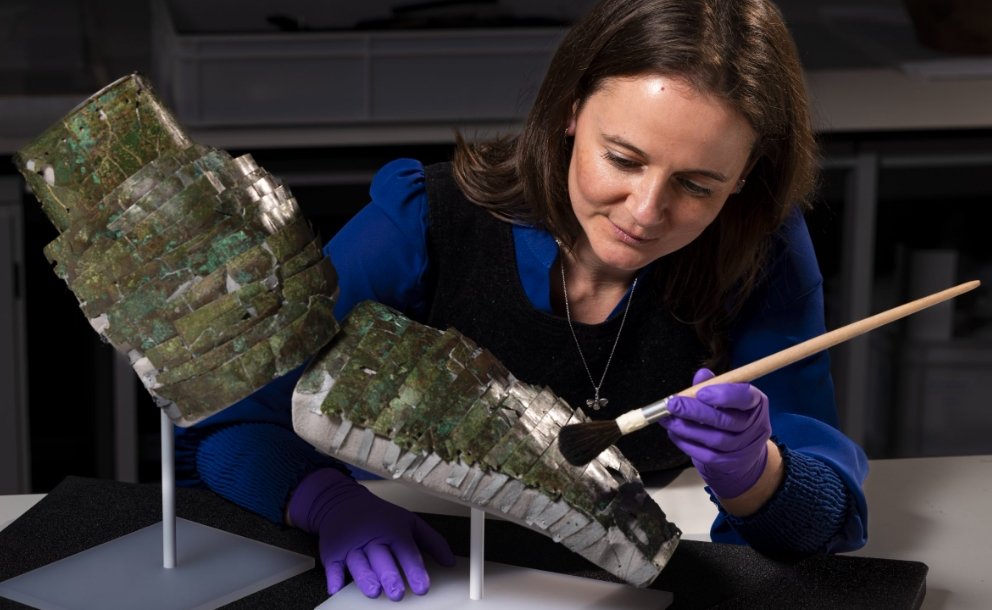This week, archaeologists and researchers made some fascinating discoveries that shed light on the past. From an ancient Roman arm guard to a Stone Age chewing gum, here are some of the most interesting history news of the week.
A Stunning Roman Arm Guard Reconstructed From Over 100 Pieces
Archaeologists in Scotland have rebuilt an 1,800-year-old Roman arm guard that was found among the ruins of an ancient fort in 1906. The arm guard, which was made of iron plates and brass fixings, is the only intact one of its kind in the world. It belonged to a high-ranking centurion who served in the Roman army during the invasion of Britain.
The arm guard was discovered in more than 100 tiny pieces, and it took experts three weeks to painstakingly reconstruct it. The result is a remarkable piece of ancient armor that shows the craftsmanship and status of the Roman soldiers. The arm guard would have looked absolutely spectacular on the battlefield, said Fraser Hunter, a curator at the National Museums Scotland.
A 10,000-Year-Old Chewing Gum Reveals The Diet Of Stone Age Teens
A group of Stone Age adolescents in Sweden had a habit of chewing on a tar-like black resin made of birch bark. They probably did it for fun, or to relieve toothache, or to make tools. But they also left behind a valuable clue for modern researchers: their DNA.
The resin, which is also known as chewing gum, was found by archaeologists at a site called Huseby Klev. The gum preserved the DNA of the ancient chewers, as well as the microbes and food particles in their mouths. By analyzing the gum, researchers were able to identify the sex, ancestry, and diet of the Stone Age teens.

The results showed that the chewers were mostly female, and they had a hunter-gatherer lifestyle. They ate hazelnuts, duck, and wild boar, among other things. They also had a diverse oral microbiome, which suggests that they had a good oral health. The chewing gum is a unique source of information about the past, said Natalija Kashuba, a researcher at Uppsala University.
A Rare Medieval Gauntlet Found In Switzerland
A metal detectorist in Switzerland has found a rare medieval gauntlet that dates back to the 14th century. The gauntlet, which is made of iron plates and rivets, was meant for the right hand and wrist. It was probably worn by a knight or a nobleman during a battle or a tournament.
The gauntlet is in surprisingly good condition, considering that it was buried in the ground for centuries. It is one of the few examples of medieval armor that have been found in Switzerland. The gauntlet is a sensational find that gives us a glimpse into the medieval warfare and culture, said Andreas Motschi, an archaeologist at the Canton of Zurich.













